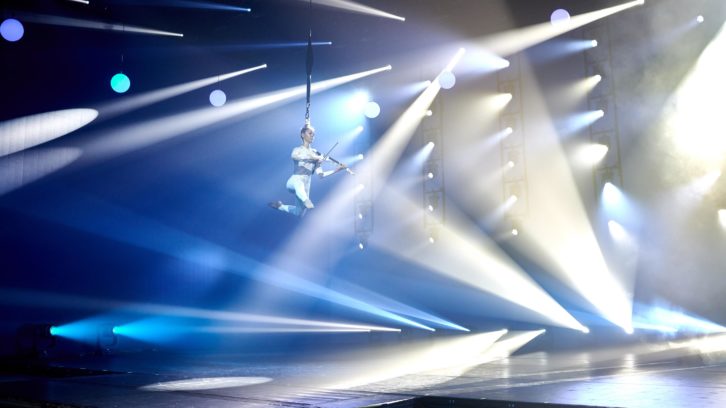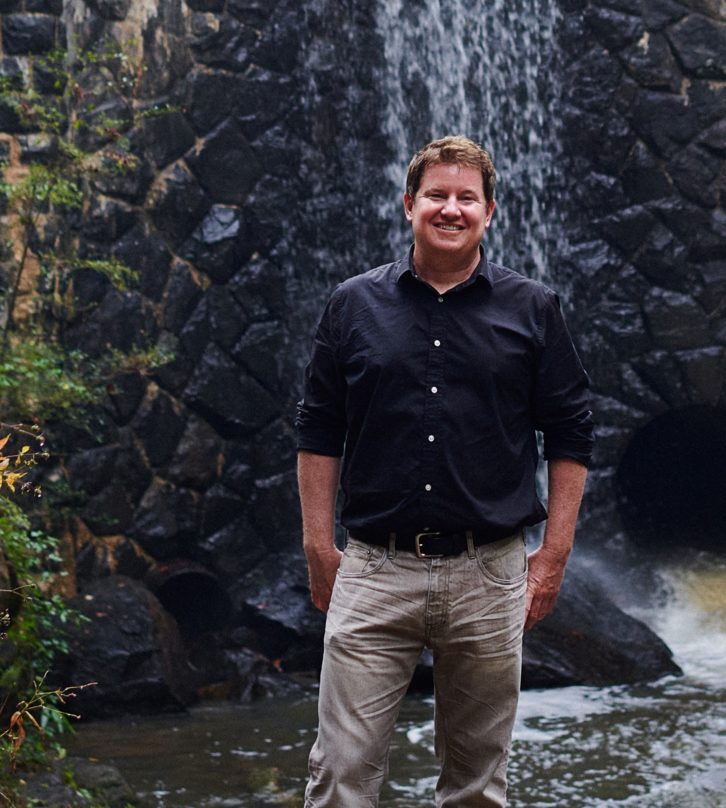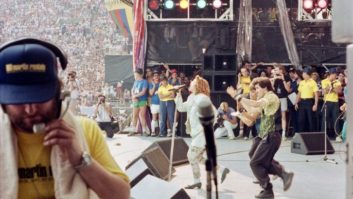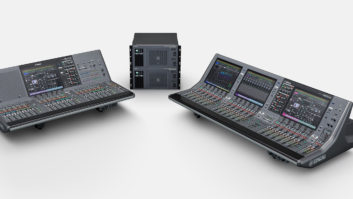
As coronavirus restrictions nationwide have slowly lifted in recent months, quite a few artists have returned to touring…though often for a succession of weekend dates rather than months of five or six shows a week, and often in smaller venues or just select regions. That’s become just one of the potential bumps in the road ahead as live entertainment production companies ramp back up in the wake of the pandemic.
Check out any touring sound company’s website and you’ll likely see anywhere from a handful to dozens of job vacancies posted. Production companies did their best to hang on to as many employees as they could during the pandemic, but for some staff members, there was no alternative but to find some other paying job.
Lollapalooza Brings Back Live Music Festivals – A Mix Photo Essay
“Unfortunately, last March, we had to release a large portion of our staff,” Bryan Brunclik, vice president, production, at Clearwing Productions, says, though the company, family-owned since the 1970s, was able to retain about 30 people with the help of various state and federal aid programs, such as PPP. “We had to do a number of things, like reduce hours and salary cuts, but everybody was very understanding,” he says.
Even with the reduction in hours, the federal government’s stimulus checks and enhanced unemployment benefits helped employees through the pandemic. Clearwing also took advantage of Work Sharing, a state program that helps top-up weekly wages according to the percentage by which the employer has had to reduce a worker’s hours. “Luckily, each of the three states we’re in—Wisconsin, Colorado and Arizona—had that program,” Brunclik says.
According to Craig Mitchell, managing director, touring, for LMG Touring and Entertainment, the company’s diversified services, encompassing video, audio and lighting, gave it a leg up during the pandemic: “We’ve been around for going on 38 years. We’re privately owned, we have very little debt and we’re well managed. That’s given us some advantages.”

LMG’s soundstages in Las Vegas, Nevada, and Orlando, Florida, picked up the slack when COVID-19 shut down touring, hosting artists and Fortune 50 and 500 corporate clients shooting videos, commercials and other content. High-profile productions included Uber Eats’ Wayne’s World commercial, which debuted during Super Bowl LV, and a performance from the roof of Caesar’s Palace in Las Vegas by The Killers for the NFL’s Monday Night Football in September.
“We were doing up to 18 or 20 events a day,” Mitchell says. “We had techs working 80-hour weeks. We were able to train a bunch of people, taking them from live events to streaming, so we were able to keep comparatively quite a few people employed, along with freelancers. Some highend media server people shifted into XR mixed reality work— we have XR stages in London, Orlando and Las Vegas.”
Then, coming out of the pandemic, he says, “We had some of the first tours in the country. Country artist Dylan Scott was doing weekend warrior shows in smaller venues a month ago. Lindsey Stirling started an amphitheater tour the first week of July.” LMG’s rehearsal studios are currently busy hosting multiple artists, including Travis Scott, he says.
Clearwing, too, rolled with the punches during the pandemic, providing production for hybrid, outdoor and political events. The company’s admin and sales teams reacted to the situation by reevaluating and streamlining processes to improve client interactions and support. With entertainment venues closed down, Clearwing’s trucking division hauled freight for retail and manufacturing companies.
Now, as shows begin to return, including Milwaukee’s Summerfest in September and other events at that location before then, Brunclik says, a number of previous employees are leaving their current jobs to return to Clearwing. “They love working here; they want to get back to their family.”
Yet some people are not ready to return, he says: “They’ve found more stability or aren’t sure what’s going to happen with the coronavirus variants.” There is good reason for caution; as of July 16, the Centers for Disease Control and Prevention reported that the seven-day average of coronavirus infections nationwide had jumped nearly 70 percent in just one week, thanks largely to the Delta variant. Anecdotally, some observers believe a significant percentage of former live events production personnel may not return to the industry, for one reason or another, including workers in catering, transport and other associated jobs.

The hiatus also gave Clearwing, whose systems integration division had its busiest year and continues to thrive, an opportunity to reevaluate the production division’s business model, Brunclik says, in anticipation of labor and resource shortages as touring work returns. “The last thing we want to do is overpromise and underdeliver,” he notes.
Indeed, production gear could soon be in short supply, a situation exacerbated by the worldwide chip shortage. One digital mixing console manufacturer is reported to be backordered as much as 12 weeks. And if everyone’s gear is out on the road, there will be no possibility of cross-renting.
“We’ve built a business where we can respond to last-minute requests—we make the impossible happen—but there’s going to have to be some awareness, as things get busy and there are more tours out than normal, that there are going to be some shortages,” Mitchell says.
“Traditionally, the first thing a tour or production manager does is lock down their buses, but we’re rolling into a situation at the end of this year where they might want to start taking that approach with gear, locking it in a month or two ahead of time instead of two weeks ahead of time, because we are expecting some potential shortages across all vendors.” Plus, Mitchell points out, companies still need to recoup on the equipment they bought pre-pandemic and may not currently have the CapEx to buy more.
One place to turn for new staff might be the many specialist schools across the country. Rachel Ludeman, employment coordinator with the Conservatory of Recording Arts & Sciences (CRAS) in Arizona, reports, “From my recent work with our CRAS graduates who are looking for employment, live production is on the upswing. There seems to be a very large need for stagehands, techs, A2s and A1s. It seems as though many of the previous engineers have either found new work or have retired.
Back on the Road! Live Sound Gears Up for Reopening
“I’ve noticed more companies willing to take on our recent graduates who have the education and foundation to perform the position and are more willing to facilitate a small learning curve in the workplace, in order to fill these positions,” Ludeman says. “This has given our newest graduates amazing opportunities to get their feet wet and make a name for themselves in the live industry.”
That said, some positions can only be filled by experienced hands. “Even though there’s a demand and there’s a ton of work, we have to be selective with the people that we bring in. We want quality people,” Clearwing’s Brunclik says.
There has always been a talent shortage, Mitchell believes. “I think 2019 was one of the peak years for live entertainment, and we had gear and talent shortages then.” This year, he suspects, even reticent techs will eventually return. “They may not come back on the first phone call, but they may be more interested on that third or fourth call—and there are always opportunities for more people to get into the business.”
Colleges are great at turning out lighting designers and FOH engineers, Mitchell says, but what about the people behind the scenes who help make shows happen? “We realized that universities are not training system techs, LED techs, vendor account executives—so we’re building out curriculums and creating internship opportunities for the next generation. To grow, we need to take a leadership position in building that future.”
To that end, LMG has set up the Coil Learning Center and established relationships with colleges near the weeks-long training program’s four U.S. locations, which include Baltimore, Md and Detroit, Mich. “We have paid interns come in on the technical side and the front office side,” he says. Classes cover everything from using Microsoft Excel in AV to L-Acoustics system fundamentals.
Many touring production companies across the country kept idled staff sharp with technical refresher courses during the pandemic, including those hosted by some of the equipment manufacturers. LMG was no exception, offering employees a comprehensive menu of courses, especially on the visual side, from the likes of Barco, BlackMagic, NewTek/Vizrt and Ross, and trade association AVIXA.
One thing is for sure: It’s as important to get the body as sharp as the mind. “Gigging is demanding; it takes a toll,” Brunclik says. “You need to be in shape to pull those hours and be on your feet working. Everybody’s going to have to get reacclimated.”






